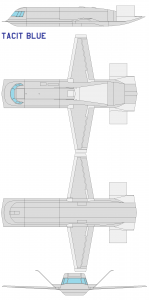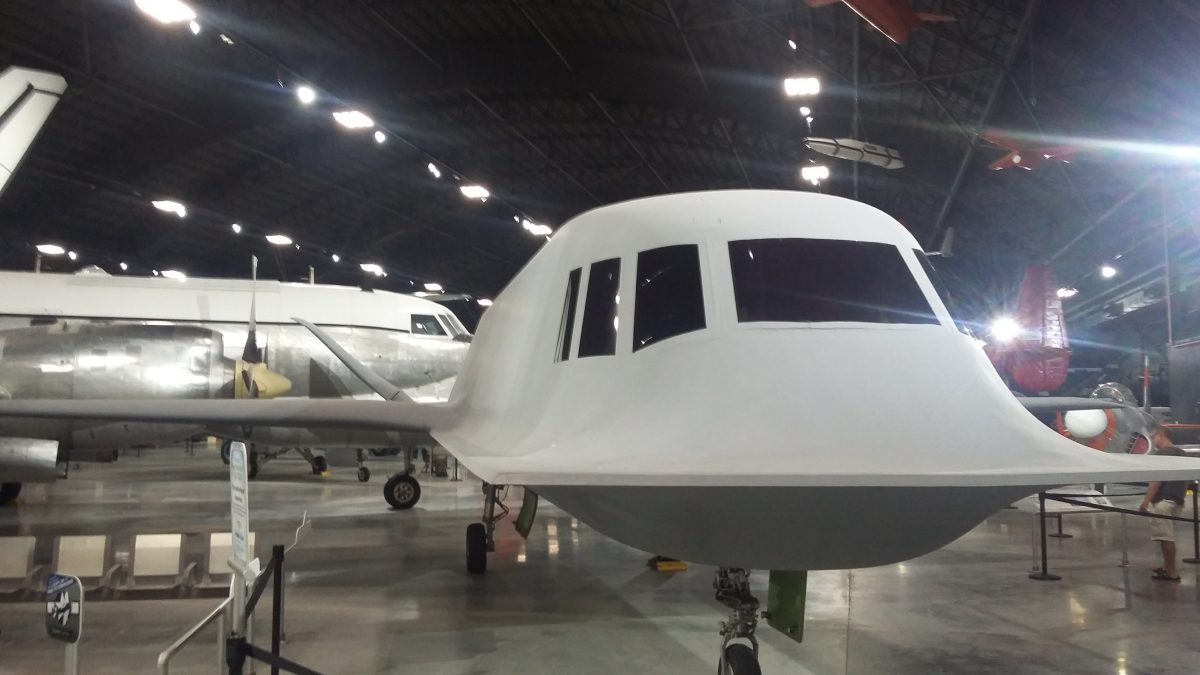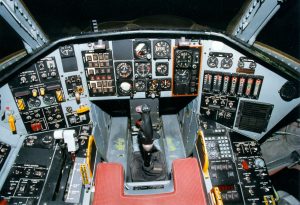Before The F-117, And The B-2, There Was Tacit Blue – September 9, 2022

Was a Man From Down Under The First to Fly? – September 2, 2022
September 3, 2022
Betty Skelton…..Aviation’s Sweetheart – September 16, 2022
September 16, 2022RN3DB
September 9, 2022
Good Morning,
Last week we talked about how the Army developed a program for quiet/stealth technology during the Vietnam war and todayI want to take you back today to a program that gave birth to the B-2 Bomber and other programs for the USAF. The program was called “Tacit Blue” and those who worked the program simply called the airplane “Shamu” because it’s profile reminded them of a killer whale.
Enjoy…………………………
Northrop’s Tacit Blue Program
BSAX
(Battlefield Surveillance Aircraft, experimental)
(DARPA/USAF YF-117D)
In early April 1976, Lockheed received word that it had officially won Phase I of the XST competition. However, DARPA urged the Northrop team to remain together, and shortly thereafter it successfully submitted studies for a Battlefield Surveillance Aircraft, experimental (BSAX) which was to evolve into a highly-successful flight demonstration program that provided vital data for the subsequent B-2 bomber.
The USAF, DARPA, and Northrop teamed up for the TACIT BLUE Technology Demonstration Program from 1978 to 1985. The prototype validated a number of innovative stealth technology advances. Most notably, it was the first aircraft to demonstrate a low radar cross section using curved surfaces, along with a low probability of intercept radar and data link. TACIT BLUE initially was created to demonstrate that a low observable surveillance aircraft with a low probability of intercept radar and other sensors could operate close to the forward line of battle with a high degree of survivability. Such an aircraft could continuously monitor the ground situation behind the battlefield and provide targeting information in real-time to a ground command center.
The TACIT BLUE prototype was nicknamed “The Whale” or “Shamu” by the people who worked on it; the real name of the plane, if any, has never been revealed. TACIT BLUE featured a straight, tapered wing with a “V” tail mounted on an oversized fuselage with a curved shape. It had a wingspan of 48.2 feet and a length of 55.8 feet and weighed 30,000 pounds. A single flush inlet on the top of the fuselage provided air to two high-bypass turbofan engines. Flight control was supplied by a quadruply-redundant, digital fly-by-wire flight system that stabilized the aircraft about the longitudinal and directional axes.
TACIT BLUE owed some of its unique shape and size to the reconnaissance equipment it was designed to carry. A Hughes multi-mode-side-looking radar (SLAR) a predecessor to the ground surveillance radar used in Joint Stars, took up a large part of SHAMU’s structure. The SLAR on TACIT BLUE was part of an effort to test if a LPI (low probability of intercept) radar could be flown on a stealth aircraft without compromising its presence. ELINT (Electronic Intelligence) antennas for intercepting enemy communications were also part of TACIT BLUE’s reconnaissance systems.
TACIT BLUE was developed as a potential platform for radar sensors developed under the Air Force Pave Mover and Army SOTAS programs. In 1982, the Undersecretary of Defense for Research and Engineering (USDRE) combined the SOTAS and Pave Mover efforts into a joint program, later designated Joint-STARS or J-STARS. From 1982-1984, the services, OSD, and Congress wrestled over the development of requirements for the joint program, as well as the appropriate platform for the sensor. At the time, one option under active consideration was a two-phased program in which the radar would initially be deployed on ten conventional aircraft, with subsequent production focused on a stealth platform derived from the TACIT BLUE test aircraft. In May 1984, the Chiefs of Staff of the Air Force and Army made the final decision to put the Joint STARS radar on a 707 platform.
TACIT BLUE was one of the most successful technology demonstrator programs in Air Force history, meeting all program objectives and most low observable and sensor performance goals. The aircraft made its first flight in February 1982, and subsequently logged 135 hours of flight over a three-year period. The aircraft often achieved three to four flights weekly and several times flew more than once a day.
TACIT BLUE was one of the most successful technology demonstrator programs in Air Force history, meeting all program objectives and most low observable and sensor performance goals. The aircraft made its first flight in February 1982, and subsequently logged 135 hours of flight over a three-year period. The aircraft often achieved three to four flights weekly and several times flew more than once a day.
The TACIT BLUE prototype was finally declassified and unveiled to the public on April 30, 1996, at the Pentagon. It was then sent to the Wright-Patterson Air Force Museum, where it was first exhibited underneath the XB-70 ‘Valkyrie’, and now below Boeing’s “Bird of Prey”.
 Astute aviation buffs were quick to notice that Tacit Blue looks remarkably like General Atomics Predator UAV, an unmanned surveillance drone, that is currently flying missions over Afghanistan and elsewhere. Another UAV, the Teledyne Ryan Tier can also claim Tacit Blue as a direct ancestor.
Astute aviation buffs were quick to notice that Tacit Blue looks remarkably like General Atomics Predator UAV, an unmanned surveillance drone, that is currently flying missions over Afghanistan and elsewhere. Another UAV, the Teledyne Ryan Tier can also claim Tacit Blue as a direct ancestor.
Although the Air Force couldn’t be pinned down on how small Tacit Blue’s radar signature is, an inside source at Northrop says that the Tacit Blue radar signature is about the size of a bumblebee. That’s at least equal, if not smaller than the F-117 Nighthawk. Such an aircraft loitering at high altitude could continuously monitor the ground situation behind the battlefield and provide targeting information in real-time to a ground command center, without detection.
The reconnaissance technologies explored through Tacit Blue, may have lead to the development of another still-secret tactical reconnaissance aircraft that aviation journalists and stealth chasers refer to as the “TR-3A Black Manta.” According to aviation insiders and eyewitness accounts, the TR-3A is a span-loaded flying wing design, about half the size of the B-2.
Robert Novell
September 9, 2022



